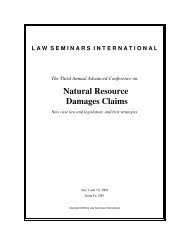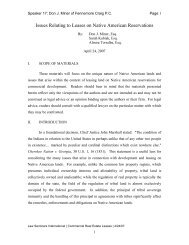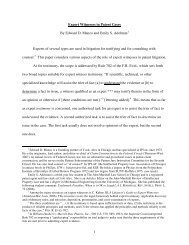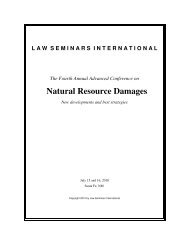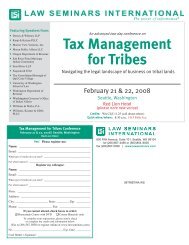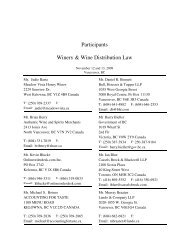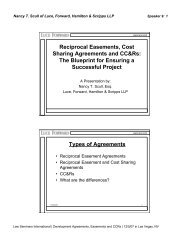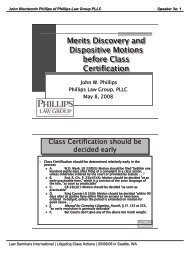LSI 2010 Real Estate Joint Ventures conference materials.pdf
LSI 2010 Real Estate Joint Ventures conference materials.pdf
LSI 2010 Real Estate Joint Ventures conference materials.pdf
Create successful ePaper yourself
Turn your PDF publications into a flip-book with our unique Google optimized e-Paper software.
David E. Myre, Jr. of Hillis Clark Martin & Peterson, P.S.<br />
Jane Rakay Nelson of Lane Powell PC<br />
(3) Otherwise, additional capital calls during Construction Phase only by<br />
mutual agreement.<br />
Developer: Nervous about giving this power to Construction Lender. Can accept<br />
only if some stated cap in JV agreement on maximum aggregate additional<br />
capital contributions.<br />
Investor: Depends on size of cap in relation to Project budget.<br />
Developer: What consequences if Member just cannot meet call? What does<br />
Term Sheet mean by “customary operating agreement provisions”?<br />
Investor: Quite simple. Other Member (“Performing Member”) can choose to<br />
advance the missing capital to the JV. And if it does, it can do so in either of<br />
two ways:<br />
First, Performing Member can make another capital contribution directly to JV,<br />
in exchange for preferred return. Second, alternatively, Performing Member<br />
can advance “missing funds” to JV and treat that as a loan by the Performing<br />
Member to the Defaulting Member, and a capital contribution by the Defaulting<br />
Member to the JV. Naturally, this loan by one Member to the other Member<br />
will bear interest and have other commercially reasonable loan terms.<br />
Developer: Doesn’t sound simple to me. Why can’t the Performing Member just<br />
loan the missing capital directly to the JV? Earn a reasonable rate of interest<br />
and get repaid before equity distributions?<br />
Investor: Couple of reasons. Simplest is that Construction Lender will not permit<br />
subordinate debt financing for Project but will permit additional equity<br />
contributions to the Company’s capital base.<br />
Developer: Okay. Tell me more about the first funding alternative you proposed.<br />
Investor: Performing Member makes voluntary additional capital contribution in<br />
amount of missing funds. After that, capital will no longer be 90-10. As<br />
reward for covering this unexpected equity gap, this voluntary capital<br />
contribution should command priority return. That is, whenever JV begins<br />
accumulating cash, JV distributions to Members will go first to return this<br />
capital plus an annual return of, say, 8%.<br />
Speaker 9b: 3<br />
Speaker 10b: 3<br />
DWT 12265643v1 0000099-071219<br />
3<br />
Law Seminars International | <strong>Real</strong> <strong>Estate</strong> <strong>Joint</strong> <strong>Ventures</strong> and Funds | 02/08/10 in Seattle, WA





